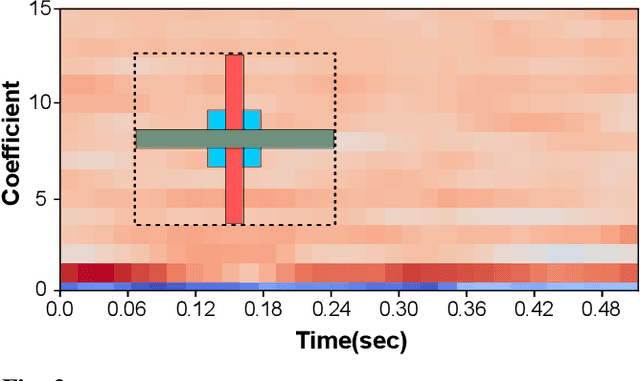Shahrokh Ghaemmaghami
GEC-RAG: Improving Generative Error Correction via Retrieval-Augmented Generation for Automatic Speech Recognition Systems
Jan 18, 2025Abstract:Automatic Speech Recognition (ASR) systems have demonstrated remarkable performance across various applications. However, limited data and the unique language features of specific domains, such as low-resource languages, significantly degrade their performance and lead to higher Word Error Rates (WER). In this study, we propose Generative Error Correction via Retrieval-Augmented Generation (GEC-RAG), a novel approach designed to improve ASR accuracy for low-resource domains, like Persian. Our approach treats the ASR system as a black-box, a common practice in cloud-based services, and proposes a Retrieval-Augmented Generation (RAG) approach within the In-Context Learning (ICL) scheme to enhance the quality of ASR predictions. By constructing a knowledge base that pairs ASR predictions (1-best and 5-best hypotheses) with their corresponding ground truths, GEC-RAG retrieves lexically similar examples to the ASR transcription using the Term Frequency-Inverse Document Frequency (TF-IDF) measure. This process provides relevant error patterns of the system alongside the ASR transcription to the Generative Large Language Model (LLM), enabling targeted corrections. Our results demonstrate that this strategy significantly reduces WER in Persian and highlights a potential for domain adaptation and low-resource scenarios. This research underscores the effectiveness of using RAG in enhancing ASR systems without requiring direct model modification or fine-tuning, making it adaptable to any domain by simply updating the transcription knowledge base with domain-specific data.
Light-SERNet: A lightweight fully convolutional neural network for speech emotion recognition
Oct 07, 2021



Abstract:Detecting emotions directly from a speech signal plays an important role in effective human-computer interactions. Existing speech emotion recognition models require massive computational and storage resources, making them hard to implement concurrently with other machine-interactive tasks in embedded systems. In this paper, we propose an efficient and lightweight fully convolutional neural network for speech emotion recognition in systems with limited hardware resources. In the proposed FCNN model, various feature maps are extracted via three parallel paths with different filter sizes. This helps deep convolution blocks to extract high-level features, while ensuring sufficient separability. The extracted features are used to classify the emotion of the input speech segment. While our model has a smaller size than that of the state-of-the-art models, it achieves higher performance on the IEMOCAP and EMO-DB datasets.
 Add to Chrome
Add to Chrome Add to Firefox
Add to Firefox Add to Edge
Add to Edge